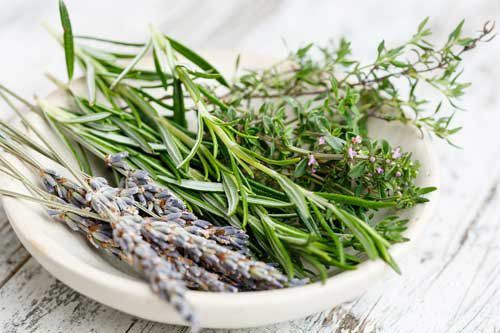
Do you have your favorite herbs? Why not grow them in water near the kitchen window? Herbs grown in water are just as fragrant as those growing in the garden. You do not have to mess your hands with soil or worry about regular watering or changing seasons. These natural healing herbs can also excellent for health.

1. Mint - This is the most popular herb for medical purposes because it contains large amounts of the volatile ingredient menthol. It gives a unique feeling of cooling the skin or tongue, but without actually causing changes in temperature. Growing mint in water is easy; Just put fresh cuttings in water to grow new plants.
2. Garden Mint - This is another mint variety. In fact, mint is a natural hybrid of garden and water mint.
3. Riggan - This spicy herb is worth keeping home because you can use the leaves to flavor almost any vegetable. Take cuttings from a young plant and put them in water. Begin to break the tops of the so-called penis as soon as the plant begins to develop well.
4. Basil - Basil loves the warmth of your kitchen and grows happily in a container of water as long as you provide him with good light. Take shoots before it starts to blossom. If you have several types of basil, keeping the cuttings in water is the best way to keep your collection in the winter.
5. Sage - In spring take soft cuttings and put them in water. You only need one or two sage plants, because very small quantities are needed to give your taste. Keep the plants in bright light and in a well-ventilated place because this herb tends to form molds.
6. Stevia - It is good to have this sweet plant in your house to add as a sweetener to freshly prepared teas and beverages. Take cuttings of actively growing soft branches and place them in water. Provide a warm place and as much light as possible to keep this tropical plant happy and full of sweetness.
7. Lemon - The aroma of lemon stirs the environment of home making it lively. The leaves are great for making tea. Take cuttings in spring or autumn. Keep the containers in a warm place that gets very bright indirect light. It takes up to 3-4 weeks for the cervix to develop roots. Keep the water clean, replacing it regularly. Some people think it's easier to leave the container with the plant outside when the weather is still warm. This can help avoid the white mold that the uterine has a tendency to form. You can bring them indoors when new plants are well developed.
8. Estragon - Take shoots in the spring after the fresh plants appear. Autumn cuttings are also good, but it may take longer to develop roots. Keep the cuttings in a warm place that gets a bright light. French tarragon is best as a culinary herb. Russian is softer to taste, so use it as a green supplement in salads.
9. Thyme - Take cuttings from the new growth of the herb. They must be green in color. The old growth is hard and brown. From it it would be much harder to start roots. The best time for cutting is mid-spring to early summer, before the plant begins to blossom. Thin stalks of thyme can dry very quickly, so place them in water as soon as you cut them. If necessary, spray the top (which is out of the water). Once it grows, cut some of the handles to stimulate branching.
10. Rosemary - Semi-tree cuttings of rosemary take longer, but the cuts of new shoots can run roots faster. Either way, it's worth the effort because rosemary is a great plant for a sunny place.
Also Read:-
Ayurveda Herbs For Indigestion and Heartburn
Top 10 Ayurvedic Herbs For Health & Uses
Read the full article

